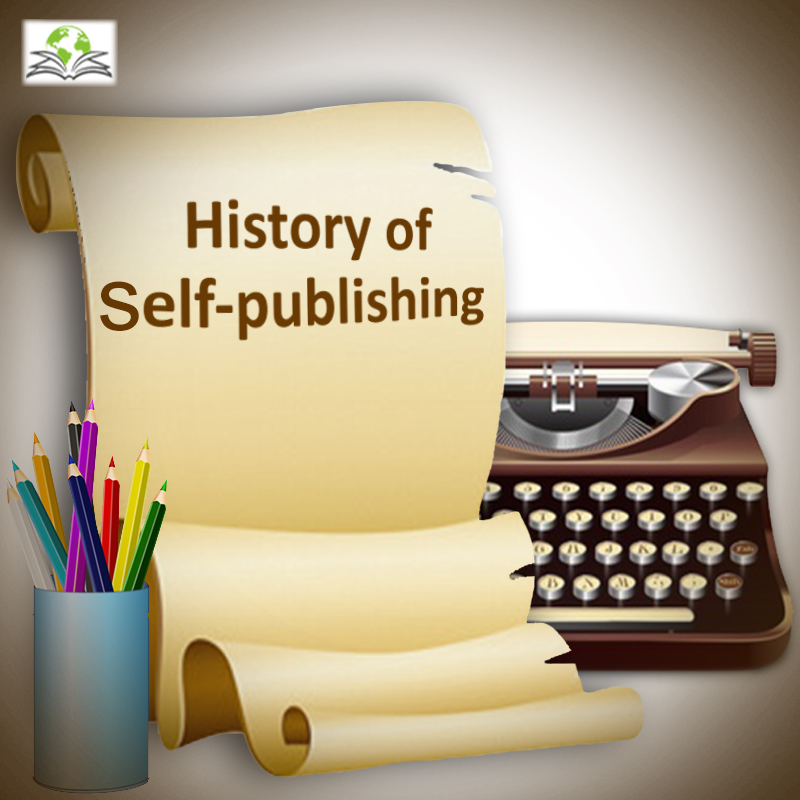History of Self-publishing
In recent time there is a lot of hype about self-publishing. In the current wave of the discussion, many authors and readers conclude that self-publishing is a new occurrence. But our close look into the history of publishing will reveal that such is not true. Self-publishing is where the author gets the editing, publishing and printing services done by a team of professionals without depending on any traditional publishing company. As a growing number of authors choose to publish their books through self-publishing platforms, self-publishing is becoming increasingly popular as a way for budding genius get recognized in the fiercely competitive world of book publishing.
Contrary to popular belief, self-publishing is not a new phenomenon. It has been around for a long time. In fact, the notion is as old as the world’s first printing press. Found difficult to believe? Let’s have a look at the notable moments in the history of self-publishing:
Earliest Examples of Self Publishing
The first evidence of writing can be traced back around 3100 BC and is attributed to the ancient Egyptian. In Egypt, people used Papyrus scrolls as the chief material for keeping written records. This earliest writing mechanism was adopted by the Greeks and Romans respectively. Johannes Gutenberg is credited to be the first self-publisher of the civilized world. He introduced printing to the western world in 1440. Before Gutenberg’s invention of the printing press, the Chinese people had been using manual printing with movable type. Gutenberg revolutionized the printing world by inventing the mechanical printing press which made it possible for books to be produced in bulk.
Renowned Authors Who Self-published
Benjamin Franklin, introduction, wrote and self-published an annual booklet ‘Poor Richard’s Almanack’, a collection of essays, weather predictions, aphoristic expressions, and household tips. In the year, British poet, philosopher, painter, and visionary William Blake self-published his monumental work Songs of Innocence, Songs of Experience, and The Marriage of Heaven and Hell. He composed the text and designed the illustration for these books. After a few refusals, Jane Austen resorted to the vanity publishing route, a new and popular concept in America in 1941. She paid a London-based publishing agent and got her novel ‘Sense and Sensibility’ published. The novel earned little recognition in its time but is taught extensively as part of the academics in many universities worldwide. Walt Whitman was alleged of writing immodest and outrageous content in his poem ‘Song of Myself’ but it is considered amongst his greatest literary creations.
Human thoughts are like a stream of water flowing constantly. Authors are writing day and night documenting their life’s exclusive experiences. Whenever their stream of ideas is obstructed, they have discovered a way to bring their work out in daylight. The world of literature has witnessed innovative publishing solutions by many brave writers who decided to set up a press to honor their creative expression. The celebrated writer Virginia Woolf’s Hogarth Press is one such example. Hogarth Press published writers like Christopher Isherwood and Edwin Muir, as well as Woolf’s To the Lighthouse and “A Room of One’s Own.”
Having said so, there are also examples where several works of potential authors have never been published or sold and eventually, those works were lost. No creation deserves such treatment. Publishing is the right of the creator. Becoming popular is luck. So, refusal from traditional publishers forced many authors to challenge the conventional form of publication. Some were skeptical about the transparency in this system and refused to have any faith in the publishers’ judgment anymore especially when some of the manuscripts that faced blatant denial, not once but many times, became the bestseller of the time. Some books went on to inspire a generation and create a legacy. Such examples include the first few volumes of J. K. Rowling’s Harry Potter, Mike Omer’s ‘A Killer’s Mind’, Ashwin Sanghi’s Rozabel Line and many more.
They chose to reform the publishing industry conventions by allowing authors to self-publish their books. In this model, authors publish their literary work independently without any direct involvement of the traditional publishing company. It allows authors to control the publication, production, distribution, and marketing of the books they write. This brought about a significant response from budding and experienced authors alike with the result of plenty of bestsellers reeling off various self-publishing platforms.
At this moment, Self-publishing is the fastest growing segment of the publishing industry mainly for complete ownership, less handling time and full freedom over the creative product. Opinions in the publishing world are divided as to whether or not you should self-publish. In the world of vicious competition and decaying values, keeping control of own creation seems the wisest choice. With the rise of self-publishing, the percentage of published authors has increased. Isn’t that good news? We just tried to give you a brief picture of the journey of self-publishing to enable authors to make a well-informed and level-headed decision. Some of the greatest works of literature might not have been possible without the self-publishing channel. It has surely opened a new avenue to authors to reach the readers of the world.


Awesome and inspiring…
On the action.
Thanks for taking time to read our blog. For any query related to self-publishing, do not hesitate to mail us at publication@excellerbooks.com.
Great, thanks for sharing this article.Thanks Again. Cool.
I am looking to self publish a book of poetry it’s my first attempt .
Where is the best place to start
Any help would be greatly appreciated .
Thanks for taking time to read our blog and appreciate our work. I will share the publishing guide and package details with you in a short while. If you do not receive it in the mailbox, check your spam folder also.